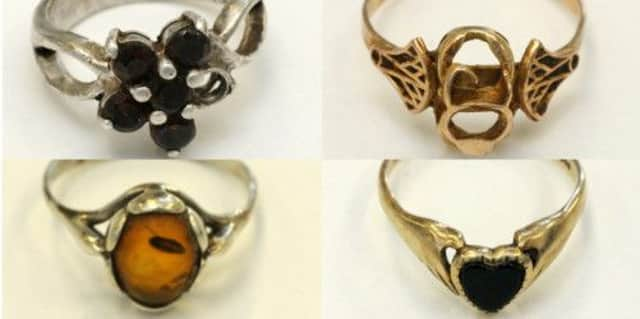Corstorphine body: Ring link to Irish travellers


Fresh images of jewellery found at the burial site suggest she was wearing a gold Claddagh ring – traditionally used in Celtic wedding ceremonies – with detectives understood to have drafted in experts to help trace its origin.
Established links with the Irish Traveller network across the UK and Ireland are now being explored but gypsy leaders today played down any connection to their community.
Advertisement
Hide AdAdvertisement
Hide AdJackie Boyd, a gypsy pastor for the Church of Light and Life with links throughout the Traveller diaspora, said he was unaware of any missing women and would be “very surprised” if the victim hailed from Traveller stock.
“If anyone in the Travelling community is missing we are normally the first called because we are such a big network. If there is any Traveller woman missing in England, Ireland, Scotland or Wales, we would have known about it within three of four days.”
The murder probe was launched after a cyclist stumbled across the head of a dismembered woman protruding from a shallow grave at the nature reserve 12 days ago. Today, detectives revealed 50 officers were now assigned to the case and said a case bulletin has been dispatched to every police force in Europe
They have also had details of two suspicious sightings of people carrying suitcases at the nature reserve. The names of six women identified by the public have been eliminated from the investigation, and 80 potential witnesses have been interviewed, including one from Buckinghamshire, in England.
Advertisement
Hide AdAdvertisement
Hide AdDCI Keith Hardie, leading the investigation, insisted all lines of inquiry remained open but a failure to identify the victim locally meant the dragnet would be widened.
He said: “These Claddagh rings are fairly prevalent in the travelling community but we don’t want to put people off coming to us with other scenarios.”
A former senior officer said it would be “much harder” to make a breakthrough if the crime was linked to the travelling community.
He said: “Travellers tend to deal with matters internally and not let the police do it for them. Their very nature also increases the difficulty in tracking people down.”
Advertisement
Hide AdAdvertisement
Hide AdEdinburgh is thought to have seen the lowest level of Traveller activity for 20 years with many now favouring Aberdeen. There is just one official site for gypsies and travellers in Edinburgh, operated by the city council at Duddingston, which has 20 pitches.
The rings
THE victim – aged between 32 and 60 – was wearing four rings when her body was discovered.
Alongside expensive cosmetic dental work – four implants and six or seven veneers – the jewellery is a key to the woman’s identity.
The Claddagh ring (top right) typically features two hands holding a heart beneath a crown, representing friendship, love and loyalty. Police believe the crown may have broken.
Advertisement
Hide AdAdvertisement
Hide AdJewellery expert Ian Clarkson, of Clarksons of Edinburgh in West Bow, examined images of the rings and suggested they were “costumey” rather than “high quality”.
He said they could be from overseas but if they were British they could be identified by the hallmark at the Edinburgh Assay Office.
Mr Clarkson said: “You are talking about 20th century rings and might be the kind you buy on holiday.”
Number 1: The jewellery expert said it appeared Nordic or Scandinavian and appeared to be nine-carat gold;
Number 2: Thought to be silver with an amber stone inset;
Number 3: Believed to be an Irish Claddagh ring made from nine-carat gold with onyx heart inset;
Number 4: Daisy-shaped silver ring perhaps inset with dark garnets.